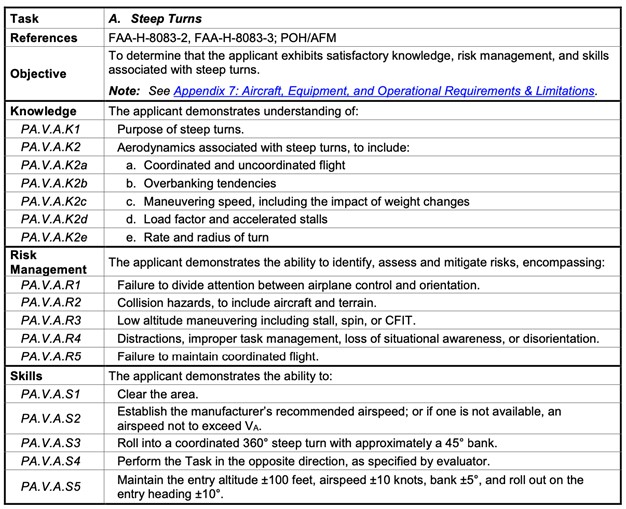| NAFI NOTAMs #51 |
Teaching Judgement Through the ACS~Guest Blogger Sarah Rovner, CFII/MEI/DPE
“Calculate your pivotal altitude” you say to your fresh new commercial student. It’s his first time doing eights on pylons. While you continue to explain and demonstrate the maneuver, you can’t help but think to yourself “why?” After all, in my short 9 years as an airline pilot, I’ve never done eights on pylons in a 737. I can’t see a situation where I would ever do eights on pylons in a 737. Even as a ferry pilot, I never did the maneuver outside of training. As I would teach and glance through the ACS or PTS, I have often thought to myself “why?” Just like going to college, you’re having to learn a bunch of seemingly useless tasks and perform them to a standard, only to never do them again after taking the test. While the ACS does talk about performing maneuvers with specific measurable standards, a lot of people only focus on the ability to perfect airspeed, pitch and bank to pass a maneuver. However, there’s two large sections of each maneuver that evaluate something equally as valuable: knowledge and risk management. All too often the instructor focuses on perfecting holding altitude during the steep turn as compared to understanding the risk management factors that are meant to be demonstrated during the maneuver. For example, if we were to dive into the ACS for steep turns, you find the following: The other thing that we discuss in our plan of action is that “perfection is not the standard” and that we are looking for “safety, proficiency, and good judgement.” That comes down to the very subjective nature of the question: what is good judgment? Even more of a question: how do I evaluate good judgement? When asking that question, I look back to the ACS. Satisfactory performance is spelled out very clearly in the ACS: Unsatisfactory performance is also spelled out very clearly in the ACS:
In both circumstances, the ACS clearly references judgement and risk management. In my experience as a CFI and DPE, teaching judgment and risk management skills has been the key to mastering those pesky maneuvers that we must demonstrate to be issued the next level of certificate. The ACS doesn’t care as much about perfect maneuvers as it does risk management and judgment. If flight instructors want their applicants to have satisfactory performance, perhaps it’s time to get back to the basics and first teach risk management and sound judgment. Those two are equally as important as the minimum skills standards and are often overlooked, and likely account for many more failures than a CFI would first think. My advice to flight instructors and students alike: master the aeronautical decision making process, learn and practice sound judgment, and learn the risk management side of the maneuvers. You may just find that there are more useful things being evaluated and taught that do carry over in your career than just holding altitude on a steep turn.
For more great blog posts from Sarah, check out her FullThrottle Aviation Blog here.
Blogs are intended for educational purposes only and do not replace independent, professional judgment. Statements of fact and opinions expressed are those of the author individually and, unless expressly stated to the contrary, are not the opinions or position of the National Association of Flight Instructors. NAFI does not endorse or approve, and assumes no responsibility for, the content, accuracy or completeness of the information presented. Readers should note content may appear in various media, including print, email, enews without further notice. |




 Sarah Rovner, CFII/MEI/DPE
Sarah Rovner, CFII/MEI/DPE





